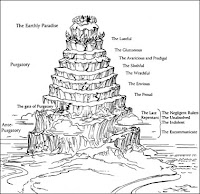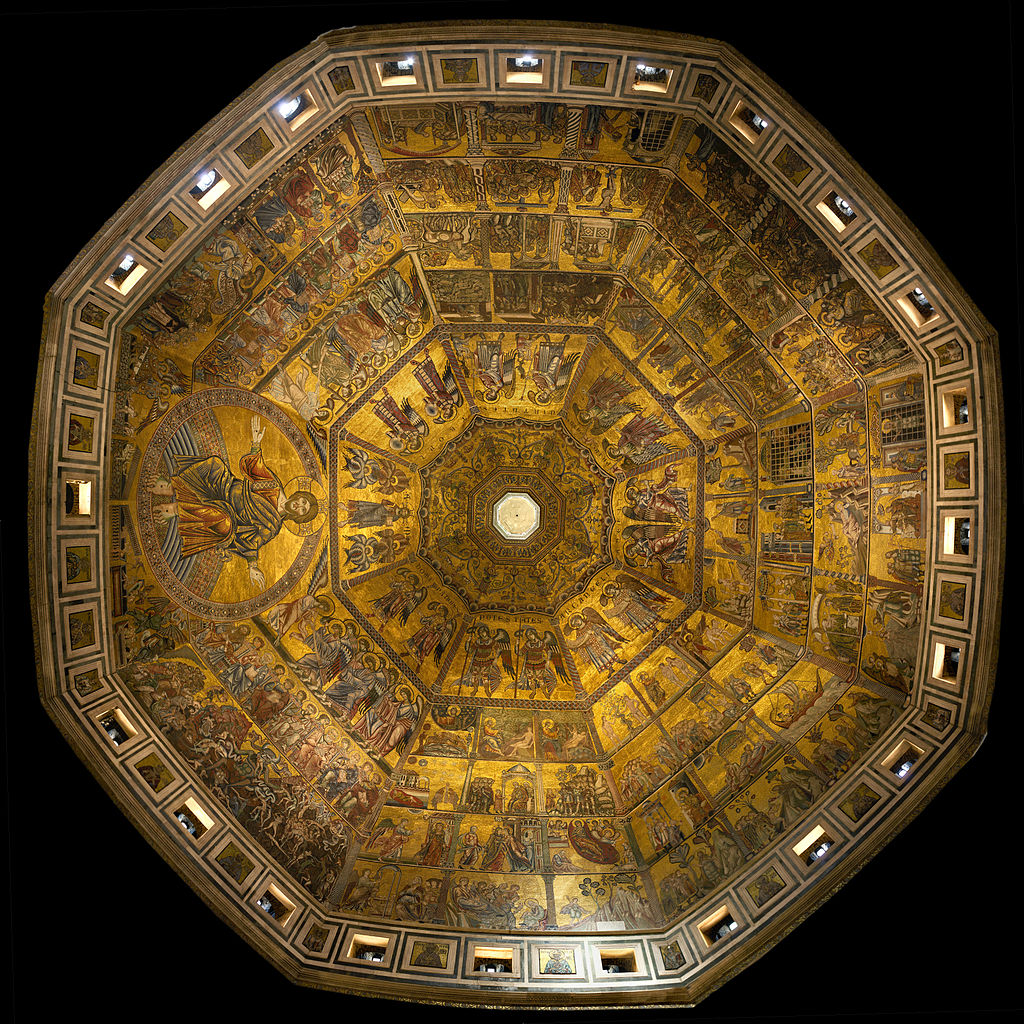 In my last post, I made a brief analysis of Rosslyn Chapel and contemplated the
storyline of Dan Brown’s Da Vinci Code. After the recent
release of Inferno, I would like to follow up with a post on the
San Giovanni Baptistery (SGB) in Florence. I was very fortunate during my MSc
to take a Renaissance course with Dr. Jill Burke where we spent eight days in
Florence visiting art historical sites and partaking in seminars in nearby
Prado. While there I made several visits to SGB, thus increasing my liking of
Brown’s use of the building in his novel. Taking cue from Samuel’s last post on perceptions, I would like
to discuss in this post how Brown perceives the imagery of SGB, and follow with
my own thoughts on the building. Brown has used SGB as a stage for his Dante
theme, but I believe there is more to be told in the numerological qualities of
the structure than Brown reveals in his publication.
In my last post, I made a brief analysis of Rosslyn Chapel and contemplated the
storyline of Dan Brown’s Da Vinci Code. After the recent
release of Inferno, I would like to follow up with a post on the
San Giovanni Baptistery (SGB) in Florence. I was very fortunate during my MSc
to take a Renaissance course with Dr. Jill Burke where we spent eight days in
Florence visiting art historical sites and partaking in seminars in nearby
Prado. While there I made several visits to SGB, thus increasing my liking of
Brown’s use of the building in his novel. Taking cue from Samuel’s last post on perceptions, I would like
to discuss in this post how Brown perceives the imagery of SGB, and follow with
my own thoughts on the building. Brown has used SGB as a stage for his Dante
theme, but I believe there is more to be told in the numerological qualities of
the structure than Brown reveals in his publication.
Brown uses the imagery of the SGB and the
neighboring Duomo in his story to emphasize Dante’s Purgatorio,
the nine-layered mountain of suffering and spiritual growth before reaching
Eden. As Robert Langdon & Sienna (his new female companion)
enter SGB, Robert looks to the glittering ceiling and notes the “multitiered
representation of heaven & hell, very much like the depiction in The
Divine Comedy.”[1] Similar perhaps, but not a true likeness. SGB was in
fact the location of Dante’s baptism, and as a native of Florence, he likely
frequented the building in the process of writing. I agree that Dante was potentially
inspired by the tesserae ceiling of SGB, but Dante’s Purgatorio consists
of nine levels, where the mosaics of SGB are set in six or seven
registers(depending on if you count the “oculi” as a layer, on right). The
nine-tiered “cosmic mountain” is a creation
of Dante’s and was not featured in art until after the release of his
publication. The mosaics depict the life of Mary, Joseph and Christ,
including The Last Judgement.
The three-headed Satan in this scene is also similar
to Dante’s, perhaps serving as further evidence as inspiration for
the publication. I consider the inclusion of a known Dante site successful, but
it should be noted that the ceiling is NOT a representation of Dante’s
Purgatory, but an influence for his written work.
 |
| Dante's Nine-Layered Purgatory |
 |
| Satan in the SGB mosaic |
 |
| 7-registers of SGB mosaic, Octagonal frame |
Although the mosaics are the true treasure of this
structure and a fine tie into Brown’s novel, I can’t help but note
the geometrical and numerological features of the structure over the tesserae.
Nine may be the magical number of Dante, but it is not the number to
be searching for at SGB. The first feature to be noted is that the
building, including the roof which supports the mosaic, is octagonal. Eight is
a reference to God’s infinite power as the figure 8 is infinity when turned on
its side. Eight is also commonly seen in Christian art in reference to
God’s creation of heaven and earth on the Sabbath, followed by the eighth day
in which Christians were reborn through baptism. Also to be considered is the
flooding of the world where Noah rescued eight people on his Ark, an event
considered a “mass baptism.” This would have been ideal reference for Brown to
have made as his “villain” attacks by means of water to cleanse what he
considers to be an overpopulated earth. Brown may not have taken advantage of
SGB's symbolic numbers, but Dante, "who [was] versed in geometric
lore," likely admired the features I have noticed. [2]
Seven is also a number of interest. As mentioned
earlier, the ceiling is made of seven registers depicting the life of Mary,
Joseph, and Christ. Seven is significant in Dante’s Purgatory as he uses the
Seven Deadly Sins to make up the first seven layers of his cosmic mountain, but
in the case of SGB, the number seven is not likely related to the Seven Deadly
Sins. I find it more likely that the use of seven registers in the mosaic
refers to the Seven Virtues, the Seven Gifts of the Holy Spirit, the Menorah (which
is seven-lamped), or perhaps Peter asking Jesus to forgive those who have
sinned against him seven times. There is no evidence to prove one idea over
another, but I am partial to the reference to the Menorah. The Menorah
symbolizes universal enlightenment. The seven candle holders represent the
branches of human knowledge. I prefer this reference because of the lantern
that tops the baptistery. The emission of light atop the octagon potentially
represents the eternal light of God. This is of course all theoretical, but the
potential symbolism is intriguing and poetic; the seven branches of knowledge
are lit eternally by the power of Christ.
 |
| Exterior of SGB |
Although Brown has made a nice link between SGB and
Dante for the sake of his novel, there is much to be uncovered in the images
and format of the building. My suggestions in this post just scratch the
surface of potential meanings within layout and art of this building. Brown has
thus proven that the structure has served as inspiration and been interpreted
by many individuals for centuries, including Dante, including Brown, and now
myself.
~Emily
[1] Brown, Dan. Inferno: A
Novel. New York: Doubleday, 2013. 239. Print.
[2] "Paradise. Canto XXXIII.
Dante Alighieri. 1909-14. The Divine Comedy. The Harvard Classics." Paradise.
Canto XXXIII. Dante Alighieri. 1909-14. The Divine Comedy. The Harvard Classics.
Bartleby Online Books, n.d. Web. 10 June 2013.

No comments:
Post a Comment